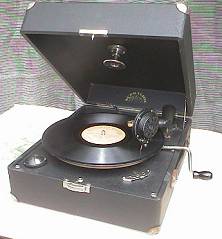Introduction
The word turntable is the modern term used to describe what is known as the phonograph, gramophone, or record player. The first turntable was invented by Thomas Edison in 1877. It was the first device used for recording and playing back sounds. Modern turntables have the same fundamental components as their ancestors, albeit slightly more sophisticated in design. This page covers the fundamental technical aspects of modern turntables. Although not discussed here, the history of the turntable is interesting and should be checked out by the curious reader.
A modern turntable basically works like this: A platter (on which the record sits) is spun by a drive system. The drive system spins the record at specific revolutions per minute (RPM). A pickup system in the form of a stylus and cartridge converts the audio on the record into an electrical signal. A tracking system in the form of a mechanical arm connects the cartridge to the turntable and also enables the pickup system to track the record grooves smoothly and steadily.
In short, there are three components of a modern turntable that need to be inspected in order to understand how one works. These three components are:


